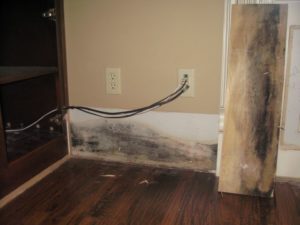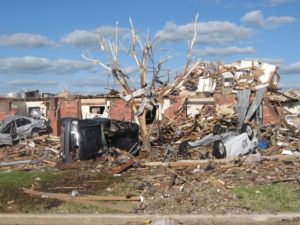Black mold has a strong and unpleasant smell. It’s often linked to damp, decaying places.
The smell comes from compounds produced by the mold. It smells like rotting wood or paper. This smell can tell you mold is there, even if you can’t see it.
Key Takeaways
- Black mold emits a strong, musty odor due to mVOCs.
- The smell is often likened to rotting wood or paper.
- Its presence can be indicated by the odor before it’s visible.
- mVOCs are produced during the mold’s metabolic processes.
- The odor is a characteristic sign of black mold infestation.
Characteristics of Black Mold Odor
Black mold has a strong, musty smell. It’s like the scent of wet cardboard or rotting leaves but more intense. This smell can linger for a long time.
The smell of black mold can change based on a few things. These include how much mold there is, how wet the area is, and what it’s growing on. For example, mold on damp wood or drywall smells worse than on other surfaces.
Factors Influencing Black Mold Odor
- Mold Growth Stage: The smell gets stronger as the mold grows older.
- Moisture Levels: More moisture makes the smell worse.
- Surface Type: Mold on wood and drywall smells more because these surfaces hold more mold.
Knowing these factors helps us spot and fix black mold problems. The smell is not just annoying; it warns of health dangers and damage to your home.
What Does Black Mold Smell Like in My Tulsa Home?
To understand black mold’s smell, we need to look at the science behind it. The smell comes from compounds made by mold during its growth. These compounds are called microbial volatile organic compounds (mVOCs).
Understanding mVOCs and Their Role in Mold Odor
mVOCs are chemicals made by mold. They can change based on the mold type and where it grows. These chemicals give mold its musty smell.
Several things affect how mVOCs are made:
- The type of mold species present
- Environmental conditions such as temperature and humidity
- The substrate on which the mold is growing
Different molds can smell different. Some might smell sweet and musty, while others smell earthy and strong.
It’s hard to tell if it’s black mold just by smell. This is because many molds smell similar. But knowing about mVOCs helps us understand mold smells better.
Locating Black Mold by Following the Smell
Homeowners can use the smell of black mold to find it. The musty odor is a clear sign of mold. It helps people spot areas that might need checking.
Look in bathrooms, basements, and places with water damage for black mold. In bathrooms, check showers, bathtubs, and sinks for mold. Basements are also at risk because of high humidity and water leaks.
Areas Prone to Black Mold Growth
- Bathrooms: Look for mold around showers, bathtubs, and sinks.
- Basements: Check for signs of water damage and high humidity.
- Areas with water damage: Inspect for mold growth after leaks or flooding.
Act fast if you smell something musty. Over time, you might get used to the smell. But it’s important to check it out quickly. If you think you have black mold, get a professional to help.
By following the smell and being proactive, homeowners can tackle black mold early. Regular checks and upkeep can also stop mold from growing in the future.
Conclusion: Health Implications and Next Steps
Knowing how to spot the smell of black mold is key to finding health risks indoors. Black mold can cause breathing problems and allergic reactions. Spotting the moldy smell is the first step to fixing the problem.
If you think you have black mold, act fast. For small spots, you can try to clean it up yourself. But, big infestations need a pro. Knowing how to recognize mold smells helps prevent it from growing.
Keeping your indoor space healthy means watching for mold signs early. By recognizing the smell of black mold, you can take steps to reduce its effects. This ensures a safer place to live or work.
Need Mold Removed in Your Tulsa Home?
Call Reset Restoration today for emergency mold remediation services in the Tulsa, OK area!




